ADI Dome housing
Catalog #84826
Catagory:
Housing
Dragon's Price:
CONTACT US
Date Added: June 11, 2017 01:35
Page Views: 336
ADI Dome housing
Prefab : C:/Users/asus1/AppData/Local/IM/Runtime/Message/{978A4EC4-DC5B-4D7B-A9C1-7220F92B6ECF}/Forward\image0022.gif
C:/Users/asus1/AppData/Local/IM/Runtime/Message/{978A4EC4-DC5B-4D7B-A9C1-7220F92B6ECF}/Forward\image0033.jpg
C:/Users/asus1/AppData/Local/IM/Runtime/Message/{978A4EC4-DC5B-4D7B-A9C1-7220F92B6ECF}/Forward\image0044.jpg
C:/Users/asus1/AppData/Local/IM/Runtime/Message/{978A4EC4-DC5B-4D7B-A9C1-7220F92B6ECF}/Forward\image0055.jpg
AbbreviatiC:/Users/asus1/AppData/Local/IM/Runtime/Message/{978A4EC4-DC5B-4D7B-A9C1-7220F92B6ECF}/Forward\image0066.jpg
on of prefabrication
Construction method that minimized on-site construction works by assembling various construction materials such as structural members, floor, wall unit, ceiling, roof panel, etc., with prefabricated materials in the factory.
Construction of ADI DOME HOUSE begins to assemble the patented outer walls which are manufactured in the factory like Lego blocks.
The building is completed with additional subsequent processes and interior and exterior works.
Thanks to the reduction of on-site works, overall construction period can be reduced and consequent reduction of various on-site problems guarantees stable and reliable construction quality.
C:/Users/asus1/AppData/Local/IM/Runtime/Message/{978A4EC4-DC5B-4D7B-A9C1-7220F92B6ECF}/Forward\image0077.jpg
C:/Users/asus1/AppData/Local/IM/Runtime/Message/{978A4EC4-DC5B-4D7B-A9C1-7220F92B6ECF}/Forward\image0088.jpg
C:/Users/asus1/AppData/Local/IM/Runtime/Message/{978A4EC4-DC5B-4D7B-A9C1-7220F92B6ECF}/Forward\image0099.jpg
C:/Users/asus1/AppData/Local/IM/Runtime/Message/{978A4EC4-DC5B-4D7B-A9C1-7220F92B6ECF}/Forward\image01010.jpg
C:/Users/asus1/AppData/Local/IM/Runtime/Message/{978A4EC4-DC5B-4D7B-A9C1-7220F92B6ECF}/Forward\image01111.jpg
C:/Users/asus1/AppData/Local/IM/Runtime/Message/{978A4EC4-DC5B-4D7B-A9C1-7220F92B6ECF}/Forward\image01212.jpg
Structure
ADI DOME HOUSE is safe as it implements the dome shape which is structurally safe.
ADI DOME HOUSE is structurally designed to endure more than 2 meter of snowfall, 40m/s of strong wind and 5.5 magnitude of earthquake on the Richter scale. This can also be increased .
ADI DOME HOUSE uses a wall panel system which has strength properties as follows.
Category
High-density EPS
Bead type
1-1
Bead type
1-2
Bead type
1-3
Bead type
1-4
Test method
Density (㎏/㎡)
36
30.00
25.00
20.00
15.00
KS M 3808
Compressive strength (N/㎠)
22
16.00
12.00
8.00
5.00
KS M 3808
Flexural strength (N/㎠)
47
35.00
30.00
22.00
15.00
KS M 3808
Structural analysis
In order to study the structural stability of ADI DOME HOUSE that uses high-density EPS, MIDAS-GESw, a proven software by Computational Structural Engineering Institute of Korea is used as a system for general purpose structural analysis and optimized design in construction areas. After 3D dynamic analysis based on the finite element method was performed using MIDAS-GESw, members were designed through allowable stress design method. Specifications and standard strengths of t he materials which were used for structural analysis are shown in the following table
Specifications and standard strengths of materials for structural analysis
Area
Category
Specification
Remarks
Foundation
Design standard strength
Fck=21MPa
KSF 2405 (material age of 28 days)
Rebar yield strength
Fy=300MPa
KS D2504 SD 30
EPS panel
Flexural strength
Fbs=0.47MPa
Test report
Compressive strength
Fcs=0.22MPa
Test report
Density
R=366㎏/㎥
Test report
Elasticity coefficient
Ebs=12MPa
Test report
Applicable loads include dead load, snow load, seismic load, wind load, etc. Which are calculated in accordance with [Load standard and interpretation of construction structures] established by Architectural Institute of Korea; and regarding dead load, construction load was added considering the working conditions during the construction.
Design load requirement
Dead load
Dead load : 140N/㎡
Construction load : 500N/㎡
Snow load
Based on 2 meters of snowfall
No snow removed by wind; considering the snow slides due to the slope
Wind load
Basic wind speed V=40m/sec (based on the construction structure standard(Architectural Institute of Korea, 2009)
Results of stress analysis
Category
D.L + S.L
D.L + W.L
D.L + E.L
Allowable stress for
Long sustained loading
Stress (MPa)
0.073
0.088
0.011
0.09
DL : Dead Load, SL : Snow Load
WL : Wind Load, EL : Earthquake (seismic) Load
Since the combined stress value of dead load, snow load, wind load, seismic load, etc., is within the range of the long-term allowable stress of 0.09MPa, high-density EPS dome house is structurally safe.
Insulation
Since ADI DOME HOUSE uses compressed high-density EPS as its main material, it is one of the most excellent houses in terms of insulation efficiency.
EPS product has as huge advantage to block the heat flow because it is composed of numerous independent air bubbles. Factors affecting the insulation capabilities of EPS products are as follows.
Density : Insulation effect decreases in inverse proportion to density but, gradually increases from a certain level. (about 40㎏/㎥)
Moisture contents : Insulation effect decreases because the heat conductivity increases with higher moisture contents.
Temperature : Heat conductivity decreases as the temperature decreases.
Units representing EPS insulation effect
Heat conductivity (λ, Kcal/m.hr.℃)
Heat conductivity means the quantity of heat (Q) per hour passing through an object with cross section area of 1㎡ and length of 1 meter given a temperature difference of 1℃. In other words, the degree of heat conductivity is a value that can be used to determine how easy the heat can pass through a certain material; a lower value means the material has greater insulation effect.
Thermal resistance (R, ㎡.hr.℃/Kcal)
In actual building design, both heat conductivity of individual materials and respective thicknesses should be calculated; therefore, the values considering both factors are required. Accordingly, the thermal resistance value is mostly used in building design.
* Thermal resistance R=d (thickness) / λ (heat conductivity of the material)
Heat transmission coefficient (K, Kcal/㎡.hr.℃)
This refers to the heat transfer between solid and fluid. More specifically, heat transfer coefficient means the heat transfer which is from indoor air to inner side surface of the insulation material or from the outside surface of the insulation material outdoor air.
Resistance of heat transmission (Rt, ㎡.hr.℃/Kcal)
The reciprocal of heat transmission coefficient is the resistance of heat transmission.
* Resistance of heat transmission coefficient Rt=1÷K=(∑1/a+∑d/λ)
Heat conductivity of each construction material
Category
Material
Heat Conductivity
Category
Material
Heat conductivity
Kcal/m·h·℃
W/m·K
kcal/m·h·℃
W/m·K
Metal
Iron (mild steel)
41
35.26
Ceramic
Products
Regular brick
0.53
0.46
Stainless steel
22
18.92
firebrick
1
0.86
Concrete
Regular concrete
1.41
1.21
Glass
0.67
0.58
Lightweight concrete
0.45
0.39
EPS
Foamed polystyrene
0.03
0.03
Mud wall
0.77
0.66
Foamed polyethylene
0.03
0.03
Wood
Pine tree
0.15
0.13
Others
Foam glass
0.07
00.06
Cedar
0.08
0.07
Flame grass, etc.
0.06
0.05
Quercus serrata
0.16
0.14
Sawdust
0.11
0.09
Comparison of heat transmission coefficients between existing wall panel and ADI DOME HOUSE wall panel
Figure
material
Heat
Conductivity
Thickness
(㎜)
Heat
Resistance
|<- 183mm ->|
Outdoor heat
0.43
Cement mortar
14
20
0.014
Concrete
1
100
0.063
Insulation
0.03
50
1.167
Demp-proof
0.21
0.2
0.001
Plaster board
0.18
12
0.067
Wallpaper
0.21
0.5
0.002
Indoor heat
1
0.11
Wall thickness
182.7
Total Heat
1.967
Heat
Transmission
0.508
Figure
material
Heat
Conductivity
Thickness
(㎜)
Heat
Resistance
|<- 286.2mm ->|
Outdoor heat
0.43
Tile
13
6
0.005
Cement mortar
14
24
0.017
Concrete
0.6
90
0.15
Insulation
0.03
50
1.167
Demp-proof
0.21
0.2
0.001
Plaster board
0.6
90
0.15
Wallpaper
1.4
20
0.014
Tile
1.3
6
0.005
Indoor heat
0.11
Wall thickness
286.2
Total Heat
2.162
Heat
Transmission
0.463
Figure
material
Heat
conductivity
Thickness
(㎜)
Heat
resistance
|<- 75mm ->|
Outdoor heat
0.43
Insulation
22
2.5
0.001
Galvanized
0.03
70
2.333
Insulation
22
2.5
0.001
Indoor heat
0.11
Wall thickness
75
Total Heat
2.875
Heat
transmission
0.463
Figure
material
Heat
conductivity
Thickness
(㎜)
Heat
resistance
|<- 220.5mm ->|
Outdoor heat
0.43
Cement mortar
1.4
20
0.017
Insulation
0.03
180
6
Cement mortar
1.4
20
0.014
Wallpaper
0.21
0.5
0.002
Indoor heat
0.11
Wall thickness
220.5
Total Heat
6.573
Heat
transmission
0.152
Comparison of time which indoor temperature becomes equal to outdoor temperature
Preconditions
Size of the construction structure and heat transmission coefficient of the wall panel are assumed as follows
Category
Wall panel 1 (concrete wall)
ADI DOME HOUSE wall panel
Floor area (㎡)
33.0㎡ (10 pyeong)
33.0㎡ (10 pyeong)
Size (m)
3 x 10 x 2.5
5.59 x 6.74 x 3.4
Volume (㎥)
82.5
52.3
Heat transmission coefficient (Kcal/㎡.kr.C)
0.5
0.162
Surface area of heat transfer (㎡)
95.0
59.6
Physical properties of indoor air are as follows
Air density: 1.2㎏/㎥, Specific heat at constant pressure: 0.24 kcal/㎏·℃, Specific heat at constant volume: 1.17 kcal/㎏·℃.
Time taken for indoor temperature to become equal to outdoor temperature.
Assuming no heating supplied to the inside of a completely enclosed space and no heat generation device within the space, time taken for the indoor temperature (20℃) to become equal to the outdoor temperature (0℃) is as follows:
Time taken for the indoor temperature of 20℃ to become equal to the outdoor temperature 0℃ is 27.4 hours when the space is fully enclosed with ADI DOME HOUSE wall panels without windows; and 8.8 hours in case of concrete wall panels.
If indoor boiler is set to be turned on when the indoor temperature reaches 15℃ and turned off when the temperature reaches 20℃, the boiler turns on every 28 minutes in concrete wall panel house but, in the case of ADI DOME HOUSE it turns on every 135 minutes.
This means that the number of times of boiler operation per day is 52.4 in concrete wall panel house and 10.6 in ADI DOME HOUSE respectively. In short, the number of times of boiler operation in concrete wall panel house is about 5 times bigger than that in ADI DOME HOUSE.
If indoor heat generation devices and heat generated by human bodies are considered, the differences become much bigger.
Pictures taken with thermo-graphic camera
Conventional house
ADI DOME HOUSE
Air-tightness
ADI DOME HOUSE fully considers maintaining the air-tightness to prevent energy loss.
Air-tightness becomes even more important as an energy-saving measure as well as insulation. This is because insulation alone cannot guarantee the discharge of indoor energy to the outside.
Air-tight layer not only prohibits the heat loss caused by the discharge of indoor air to the outside, but also blocks moistures, which brings effective prohibition of dew condensation due to the temperature differences between indoors and outdoors.
There is no regulation regarding the air-tightness of buildings and the air-tightness requirement suggested by PHI (passiv.de) in Germany is 50pa≤0.6/h. This means discharged air volume to the outside per hour should be less than 60% of the total volume of indoor air when the atmospheric pressure difference between indoors and outdoors is 50pa. Average value of air-tightness in local timber houses is identified to be 10~30 (times/hour), which explains the energy efficiency of “container houses” or timber houses is very low.
ADI DOME HOUSE sets the air-tightness as 50pa≤0.6/h which is suggested by PHI (passiv.de) in Germany.
Membranes suitable for damp-proofing, air-tightness, and protection against the wind should be used, and careful attention should be paid to cracks, edges, overlapped areas, etc., during the construction.
Checklists for air leak areas during construction
Areas to be checked
Remarks
Construction structure
Area where window meets wall panel
Construction installation line
Area where door meet wall panel
installation line
Window frame joint section
Area where window meets window frame
Gasket
Area where door body meets door frame
Gasket
Mechanical equipment
Area where outlet Area where pipe for wastewater and drainage passes through exterior wall
Area where outdoor outlet pipe for ice-free tap passes through exterior wall
Area where water supply inlet pipe passes through exterior wall
Area where gas inlet pipe passes through exterior wall
Area where bathroom exhaust duct passes through exterior wall
Area where hood exhaust duct of the kitchen and multi-purpose room passes through exterior wall
Area where boiler smoke passage passes through exterior wall
Area where ventilation duct passes through exterior wall
Electrical equipment
Area where electrical lead-in wire passes through exterior wall
Area where household distribution board box is located
Area where temperature adjuster box is located
Area where consent box is located
Area where power supply cord of electric power blind passes through exterior wall
Area where power supply cord for outdoor lighting system passes through exterior wall
Area where bulb box is located
Area where bulb switch box is located
Area where communication lead-in wire passes through exterior wall
Area where TV distribution case and main wire box for communication are located
Sleeve and pipe inside installed in the area of penetration
Infiltration through pipe inside
Area where wires controlling the video phone and door pass through exterior wall
Area where video phone box is located
Area where TV unit and communication consent box are located
Composition of wall unit
EPS (expanded polystyrene) has the following characteristics and benefits :
Excellent insulation capability which blocks heat flows from inside and outside due to extremely low thermal conductivity,
Excellent impact resistance capability which absorbs external shocks due to great elasticity,
Excellent water resistance and damp-proofing capability which blocks penetrating moistures and prohibits deterioration due to independently formed enclosed air bubbles
Self-extinguishing capability which flames do not spread over and are naturally extinguished even if the panel is Heated,
Excellent sound-proofing and absorbing capability which blocks outside noise and absorbs inside noise,
Convenient workability and transportability due to its lightweight property and
Environment-friendliness which doesn’t produce pollutants and enables reuse even if used as structural material.
ADI DOME HOUSE uses high-density compressed and flame-resistance treated EPS as the main material of our ADI DOME HOUSE exterior wall by fully utilizing its excellent insulation capability and improving the weak strength of EPS.
Our panel is manufactured by double overlaying high-strength fabric mesh and environment-friendly mortar on 180 mm thick, specially manufactured, highly compressed and flame-resistance treated Styrofoam wall. This shows excellent compressing result which is equivalent to compress 200 mm thick ordinary EPS.
ADI DOME HOUSE exterior wall has a patented registered technology which has been certified by Korea Institute of Construction Technology as a semi-flame-resistance construction material.
Is not only differentiated from other buildings in appearance due to its distinct form, but also its interior is easy to be decorated uniquely and beautifully, different from other buildings.
ADI DOME HOUSE is made up of smooth curves which resemble the beauty of the nature.
Interior ceiling and walls don,t have hard feelings as they are smoothly connected each other and give psychological stability. Additionally, ADI DOME HOUSE offers fantastic sky views from inside of the room. Through ceiling skylight windows, you can have warm sunlight in the winter and romantic atmosphere to see the stars and moon at night.
Excellence
Economic value
Greatly save time and costs thanks to convenient transportability and installation
Save construction time and costs thanks to short construction period from 25 to 30 days (based on approximately 50㎡ type)
Excellent economic feasibility with great transportability thanks to the construction with cell-unit assembly part
Construction form which is close to the nature
Dome structure which is scientifically safest
Natural beauty with the combination of arch-shaped curves and straight lines
Psychological comforts like in mother’s arms due to its round interior
Variety of use
Extendibility to left and right with 26.72㎡ basic unit (acquired patent)
Availability of diverse construction types and forms, efficient construction just by extending and connecting various unit types
Furniture and electric appliances can be easily placed 1 meter above the ground and occupies less space, which secures large available spaces in the building
Strong structure against outside environments
Strength becomes stronger as it has heavier vertical load because Dome structure is the scientifically safest structure and the entire structure acts as a column
Very strong against snow load thanks to strong compression strength and excellent durability
Safe in strong windy areas as every cross wind is flowing over the dome house on acute angle
If necessary, additional steel framework can be reinforced in the room
Energy saving
Best insulation capability thanks to 180㎜ thickness of compressed EPS structure (which has equivalent insulation capability to 2,000㎜ of thickness in ordinary Styrofoam)
No influence from outside temperature and the inside heat is not emitted
Pleasant living environments with minimum energy
Save more than 30~60% air-conditioning and heating energy, compared with ordinary buildings
Environment-friendly materials
No hazardous materials like dioxin and formaldehyde to human body because EPS is composed only of carbon and hydrogen
Perfect low-carbon and green energy can be realized
Zero endocrine-disruptor and perfect non-toxic material
Pictures taken with thermo-graphic camera
Conventional house
ADI DOME HOUSE
Basic Type
Basic type uses all pieces manufactured by our company, which best expressed our Dome House.
Suitable to construct small size unit and also appropriate to place several independent buildings in large area.
Perfect choice for weekend second house or pension complex.
Drawing example
Area : 45.56㎡
Layout : 1 room (also used as living room), 1 kitchen, 1 bathroom
Entrance : inside entrance (inner gate)
Size : length(9.04m) x width(5.59m) x height(3.22m)
** Optional widths : 5.59m or 6.74m
** Area can be increased by extending the length without restriction
Area : 78.60㎡
Layout : 1 large room, 2 small rooms, 1 living room, 1 kitchen, 1 bathroom
Entrance : protruding inner gate (hinged door)
Size : length(12.49m) x width(6.74m) x height(3.22m)
** Optional widths : 5.59m or 6.74m
** Area can be increased by extending the length without restriction
Main finishing materials
Category
ECONOMY
STANDARD
PREMIUM
Exterior wall
Basic
Mortar + mesh (2 times)
Mortar + mesh (2 times)
Mortar + mesh (2 times)
Option 1
-
Interior decorating bricks
Roof
Basic
Mortar + mesh (2 times)
Mortar + mesh (2 times)
Mortar + mesh (2 times)
Option 1
-
Asphalt shingle
Option 2
-
To be discussed
Windows & doors
Basic
Local, PVC double window
Local, PVC double window
Hanwha (Local) High class PVC window
Inside door
Local, middle class
Local, High class
Hanwha (Local) Top class
Entrance
Local, middle class
Local, High class
Local handmade (insulation) Top class
Innter wall
Basic
Environment-friendly mortar + water paint
Environment-friendly mortar + water paint
Environment-friendly mortar + water paint
Option
-
Silk wallpaper & environment-friendly material
Option
-
Nuba (hinoki)
Deck
-
-
Heat-treated, natural antiseptic wood
Kitchen appliances
Option : To be discussed
Option : To be discussed
Option : To be discussed
Faucet and hygienic pottery
Local, middle class
Local, High class
Local and foreign made High-class
Tile
Local, middle class
Local, High class
Local and foreign made High-class
Lighting system
Local, middle class
Local, High class
Local High class
Dimensions on drawing are based on outside wall lines for better understanding.
Building areas are based on building-to-land ratio and total floor space is based on floor-to-area ratio.
Price is based on our estimation according to the standard specifications and additional consultation is required.
Specifications in the estimation include foundation, structure, interior and exterior finish, entrance, bathroom ware, faucet, kitchenware and boiler etc.
Additional costs which are changing according to land conditions and housing owners’ options are not included in main building construction price and to be calculated separately.
Example, cost for fence and main entrance, outdoor deck, electricity and gas leading-in, construction permit, etc.
Final price is finalized by a basic contract and detailed quotations.

 Aircraft
Aircraft Business Opportunities / Investments
Business Opportunities / Investments Chemicals
Chemicals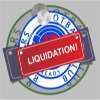 Clearance/Liquidations
Clearance/Liquidations Commodities ( Rice, Sugar , Soy Grains, Minerals and Ore)
Commodities ( Rice, Sugar , Soy Grains, Minerals and Ore) 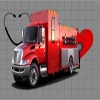 Fire/Rescue/Medical
Fire/Rescue/Medical Food/Beverages
Food/Beverages 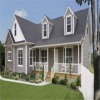 Housing
Housing Military Equipment/Unrestricted
Military Equipment/Unrestricted Military/Police
Military/Police Pet Supply
Pet Supply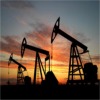 Petroleum Product
Petroleum Product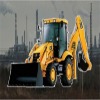 Plant and Equipment
Plant and Equipment Recyclable-HMS-PVC
Recyclable-HMS-PVC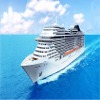 Ships/Vessels/Boats
Ships/Vessels/Boats Solar/Wind-Power
Solar/Wind-Power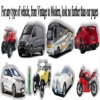 Vehicles
Vehicles Wanted
Wanted Zoo supply (unrestricted )
Zoo supply (unrestricted )


